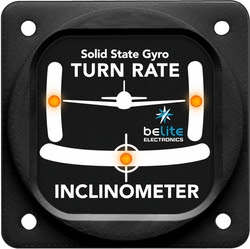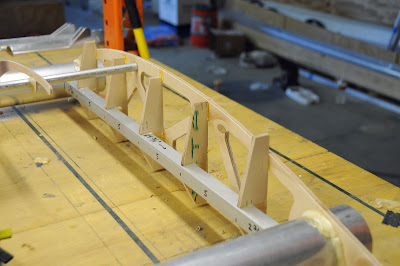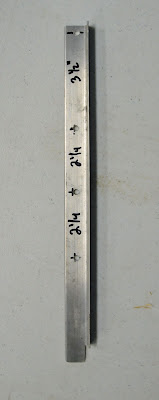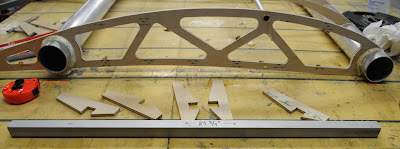Belite LED instruments are very bright, completely suitable for viewing in daylight, but they do come with a 'dimming' function for dusk conditions. Here is an example Belite LED instrument:
 |
| Belite LED instrument: Turn Coordinator with solid state gyro |
Each instrument has a yellow wire which may be attached to a dimming potentiometer, so that you can control how bright the LEDs are.
We've had several tech support inquiries on how to attach that wire. Here's the answer:
A) If you never plan to fly in dim light conditions, just leave the yellow wire unattached. Your unit will always be at full brightness.
B) If your bird has navigation lighting (EG: position lights) you can attach the yellow wire to them. Therefore, if your position lights are turned on, your LED indicators will be fully dimmed.
C) If you desire to have variable control over the dimming intensity, the yellow wire may be attached to a separate potentiometer (not supplied by us) to provide control. You'll need a potentiometer (10K ohm suggested) and perhaps a knob for the potentiometer, and you'll want to mount the potentiometer in your instrument panel. A suitable potentiometer is from Radio Shack, part # 271-1715, and they look like this:
 |
| Potentiometer. |
Your Belite instrument still requires its own power. You can hook it up to the same +12v source (red wire) and the ground (black wire).
If you don't have access to a Radio Shack, and if you are so inclined, Digi-Key sells bazillions of variable potentiometers. A suitable Digi-Key part # is: 3852A-202-103AL-ND; but the Radio Shack part is a lot less expensive.
Even More Technical info:
The yellow wire going into the Belite instrument is not connected directly to the LEDs. Rather, it is connected to a small microprocessor inside the instrument, which analyzes the voltage level and controls the LEDs by varying the amount of time they are turned on. This happens so quickly that your eye sees it as a dim condition, but its actually a very rapidly flashing light with a varying duty cycle. Many LED lighting systems with variable intensity work this way; for instance; LED brake lights on cars.





































